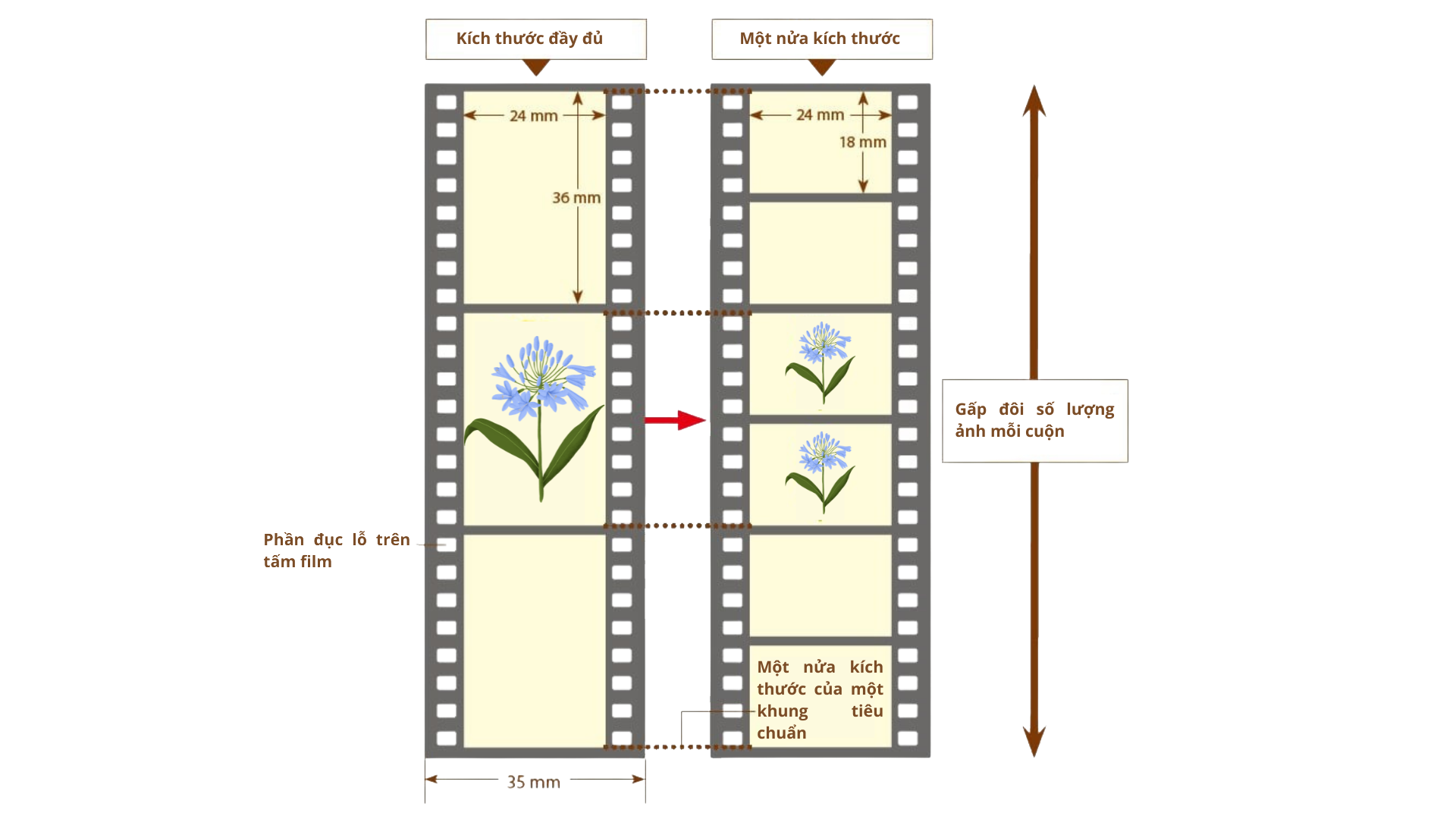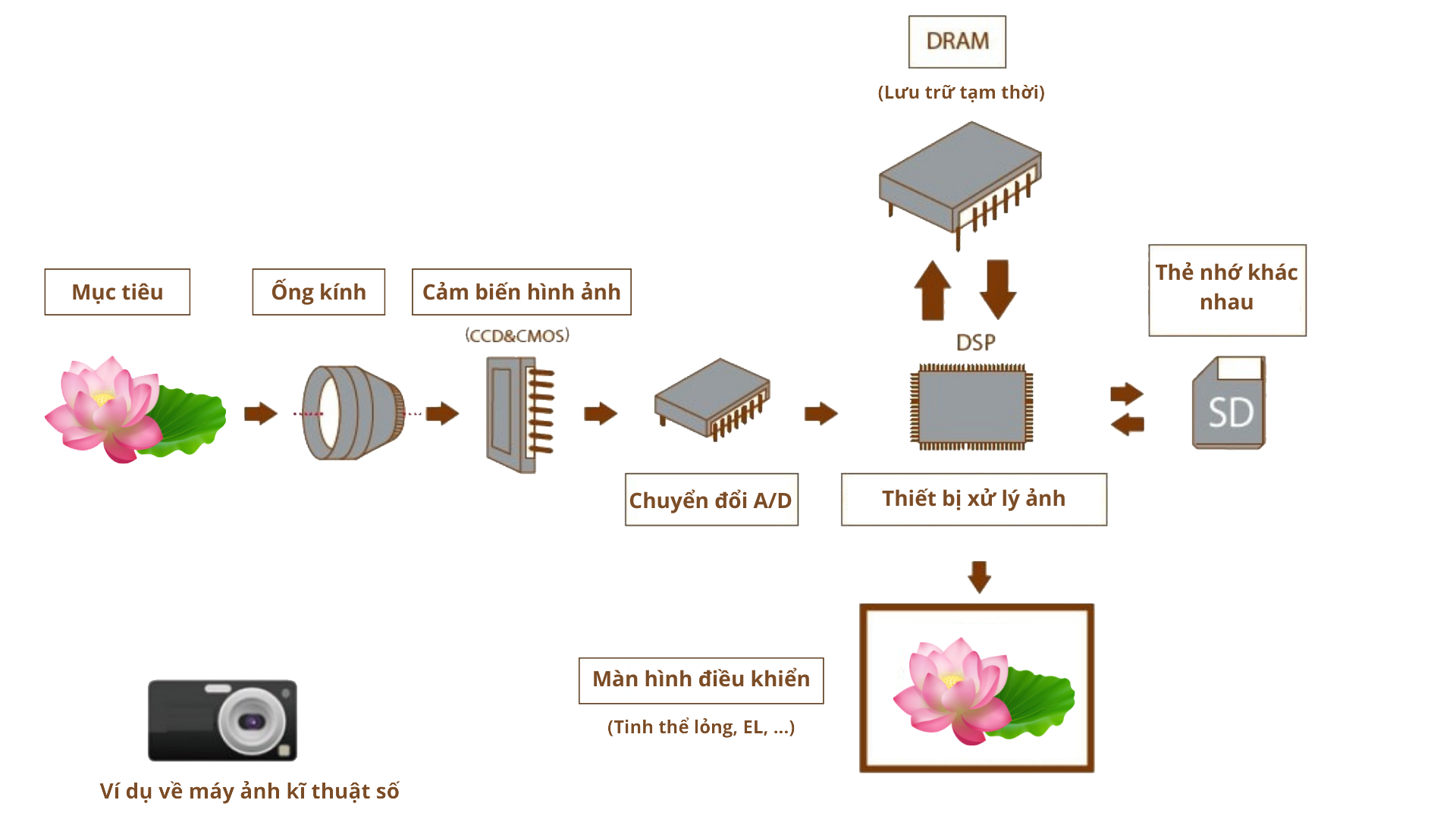History of Machine Vision - Cameras
Cameras are now ubiquitous in our daily lives and image processing is similar, but do you know how they were born and developed? This article will describe the history of the development of cameras from their inception to the development of digital cameras as they are today.
The birth of the camera:
The history of images and cameras dates back to the BC era when “camera obscura” meant “dark room” - the ancestor of the camera. The camera obscura is an optical device that projects a top-down image of an object using light passing through a small hole into a dark room. It uses the same mechanism as pinhole cameras. Finally, from the 16th century, it was developed into a device consisting of a lens, a dark box and a reflective mirror. This device was used as a drawing aid when artists sketched landscapes and painted portraits.
In 1839, a Frenchman, Daguerre, invented the daguerreotype camera (silver plate photography). About 30 years later, Maddox invented the dry plate in England. It is said that the oldest photograph in Japan was taken with a daguerreotype camera.
With these inventions, the era in which the subject was engraved by human hands ended and the era of the camera, in which the image obtained was recorded by photosensitive material, began.
Structure of the camera obscura and camerahole
.png)
Film (Silver Halide) Cameras:
The photosensitive material used to record the images taken has changed over the 170 years since the invention of the camera. Starting with silver plates, photosensitive materials evolved to wet plates and then to dry plates, and finally the film roll was invented. The film roll allowed the camera to record multiple images on a roll by transferring the film frame by frame. To accommodate this advancement, different types of film cameras were developed to accept different film sizes such as 16 mm, 4 × 5 cm, and 6 × 6 cm. In addition, half-frame cameras, which could double the number of frames on a roll, were introduced to the market. Film cameras are also called silver halide cameras because the images were recorded by exposing compounds such as silver halides to light. The most widely used type of camera film is 135 film (also known as 35mm film), which is the standard size of film used for movies. Reverse film, which produces vivid colors, is also used to make slides.
Different sizes of frames on 135 film

Popularization and Miniaturization Driven by the Development of Electronics
Surprisingly, the application of electronic technology to cameras began quite early, from the 1950s when electronically controlled automatic exposure meters were developed. This innovation freed photographers from the troublesome process of adjusting shutter speed and aperture. Furthermore, spurred by the advent of autofocus (autofocus) and auto-flash functions, cameras gradually became popular among ordinary people. At the same time, the transistors used for electronic control circuits were replaced by ICs, which accelerated the miniaturization of cameras. The trend of popularization and miniaturization was further accelerated with the development of digital cameras.
The Development of the World's First Autofocus Camera and Camera
.png)
Digital Cameras
While film cameras were in their heyday in the 1980s, the world of cameras saw another development. That was the invention of the digital still camera. This new product attracted the public with its convenient features: eliminating the DPE (developing, printing, and enlarging) steps and instantly displaying captured images on an LCD screen for users to check them. Less than 20 years after its release, it surpassed film cameras in both production and shipment numbers, leading the camera industry.
Captured images are converted into pixels using a semiconductor image sensor (image sensing device) and a light-detecting photodiode. For example, a 5 megapixel digital camera generates all the image data using 5 million tiny photodiodes.
How a digital camera works

What is the difference between a Film Camera and a Digital Camera?
The biggest difference lies in the process of recording the captured image. Silver halide camera film plays two roles at once: capturing the image and recording it. On the other hand, the image sensor in a digital camera divides these roles by first capturing the image and then recording the image in a semiconductor memory. This explains how two or more captured images are recorded on one frame if you forget to upgrade the film, and how the recording memory can be used multiple times by erasing the image data stored in it. Furthermore, film cameras record the captured images, while digital cameras perform sampling (continuous quantization of changes in exposure) before recording the image, which makes it possible to obtain highly stable and reproducible image data.
Film cameras record raw images vs. digital cameras that perform sampling
.png)
CCD Cameras
The development of digital cameras continued with the development of CCD (charge-coupled device) image sensors that increased the light sensitivity of photodiodes. CCDs are used in a variety of cameras such as compact microscope cameras, mobile phone cameras, compact digital cameras, and large DSLR cameras. CCDs provide functions to meet a variety of application needs including astrophotography and security surveillance needs, and are also used for autofocus and exposure control. Furthermore, 3D cameras, which have recently entered the market, capture realistic images exactly as the human eye would perceive an object by equipping a CCD camera with two lenses. On the other hand, the use of CMOS image sensors, which are commonly used for night vision cameras, is increasing.
Mechanism of CCD and 3D Cameras
.png)
